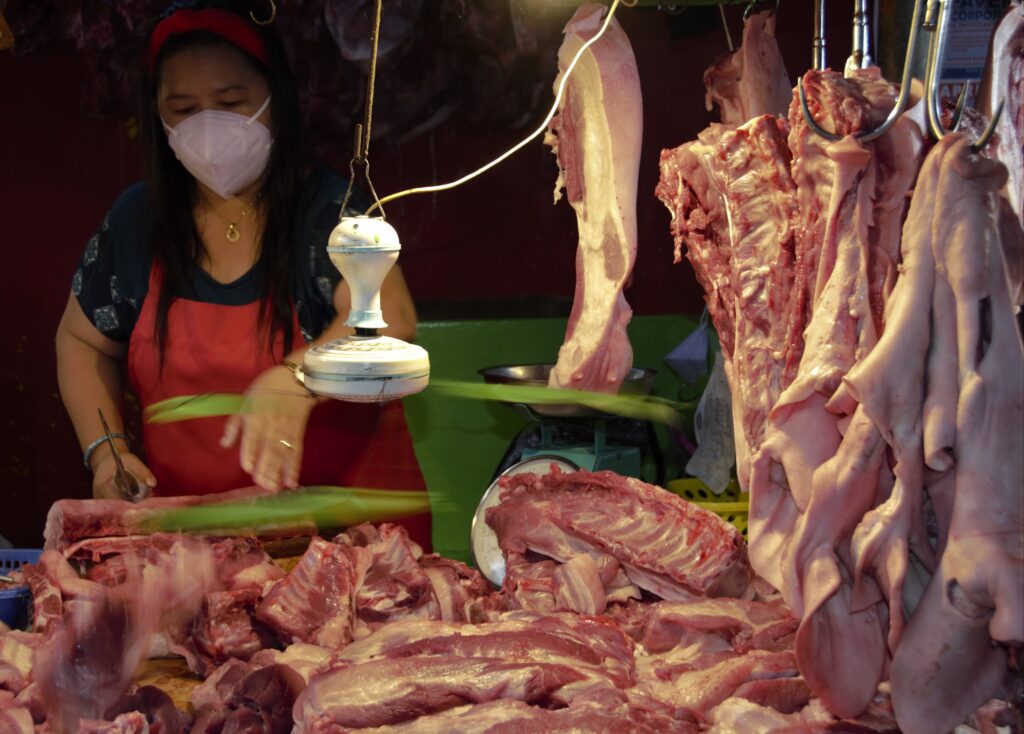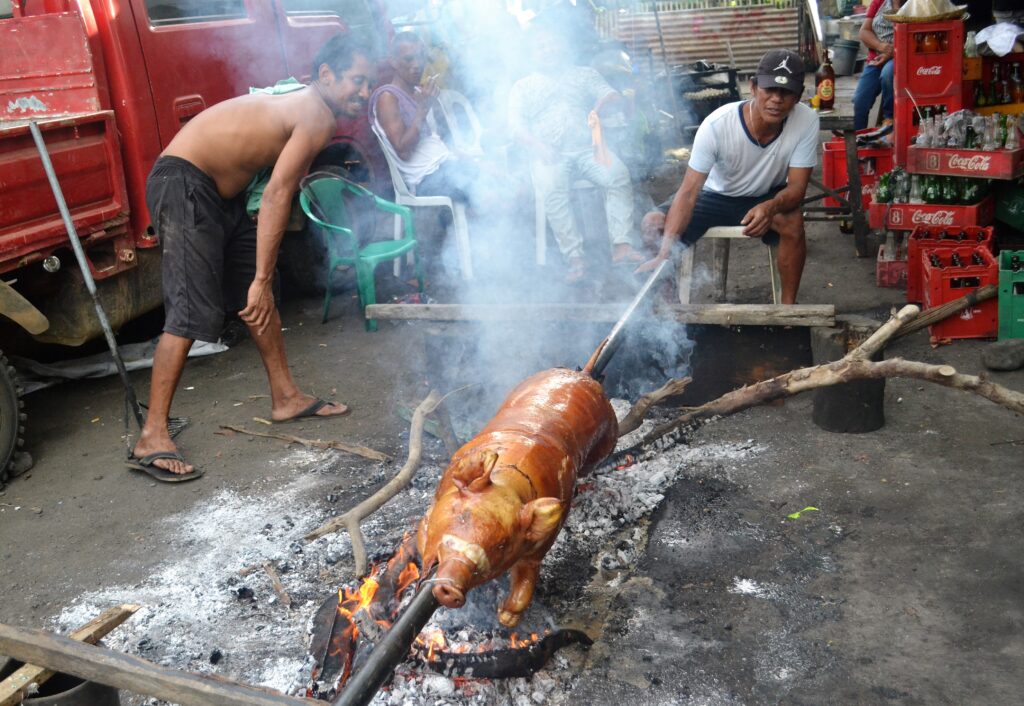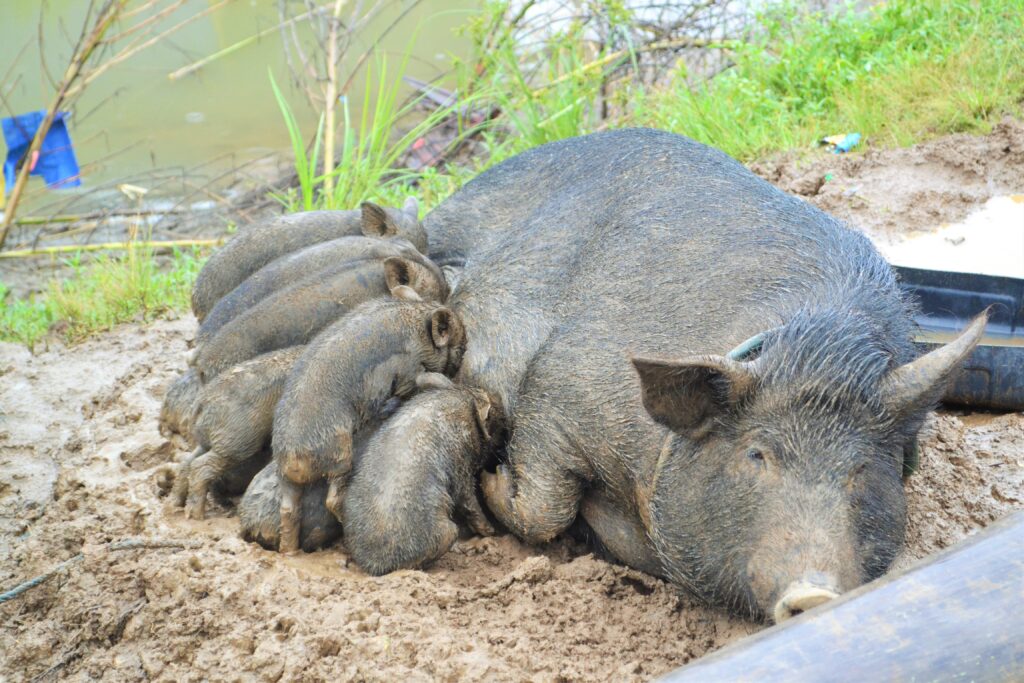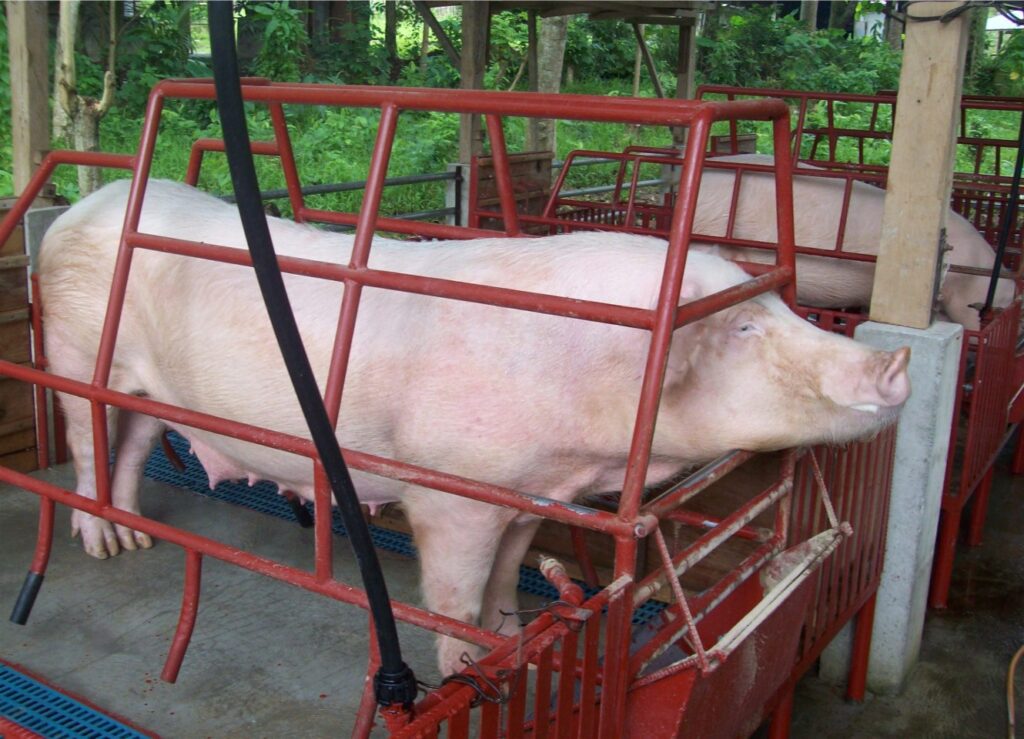Text and Photos by Henrylito D. Tacio
As African Swine Fever (ASF) is responsible for the significant reduction in the country’s swine population by around three million, which resulted in more than P100 billion in losses to the local hog sector and allied industries, President Rodrigo R. Duterte finally declared a state of calamity throughout the country.
Almost two years after ASF hit the hog industry, Duterte – upon recommendation of the National Disaster Risk Reduction and Management Council – signed Proclamation 1143, placing the whole country for a period of one year, unless lifted or extended.
The first ASF outbreak in the Philippines happened on July 25, 2019. Since then, it has already spread to 12 regions, 46 provinces, 493 cities and municipalities, and 2,561 villages throughout the country since it was first reported in 2019. Despite government interventions, new cases are still being reported.
“There is an urgent need to address the continued spread of ASF and its adverse impacts, to jumpstart the rehabilitation of the local hog industry, and to ensure the availability, adequacy, and affordability of pork products, all for the purpose of attaining food sector,” stated the order which was released on May 10.
The declaration allows the national and local government to utilize appropriate funds, including the Quick Response Fund (QRF), to contain the continuing spread of ASF and restore normalcy in ASF-hit areas.
To accomplish this, the proclamation urges all government agencies and local government units (LGUs) to render full assistance to and cooperation with each other and mobilize the necessary resources to undertake critical, urgent, and appropriate measures in a timely manner.
“All law enforcement agencies, with the support of the Armed Forces of the Philippines, are hereby directed to undertake all necessary measures to ensure peace and order in affected areas, as may be necessary,” the proclamation states.


Roasted pig
The World Organization for Animal Health (OIE) – the intergovernmental organization coordinating, supporting, and promoting animal disease control – described ASF as “a highly contagious haemorrhagic viral disease of domestic and wild pigs, which is responsible for serious economic and production losses.”
The Philippines ranks third to China and Vietnam in terms of pig production in Asia, according to the UN Food and Agriculture Organization. The Department of Agriculture lists the P191-billion swine industry as one of the biggest contributors to the country’s agricultural growth.
ASF is no ordinary swine fever. It is called such because it comes from Africa, where it was first detected in the 1920s. ASF outbreaks were first reported in China – the world’s largest pork producer – in August 2018. It quickly spread to every province in the said country.
From there, ASF hopped the border into Vietnam, Laos, Cambodia, Indonesia, Myanmar, Mongolia, North Korea, and the Philippines. Outbreaks were also reported in some parts of Europe, South America, and the Caribbean.
On its website, the OIE considered ASF a “transboundary animal disease” that can be spread by live or dead pigs, domestic or wild, and pork products. It is caused by a large DNA virus of the Asfarviridae family, which also infects ticks.
“The epidemiology of ASF is complex and varies, depending on the environment, types of pig production systems, the presence/absence of competent tick vectors, human behavior, and the presence/absence of wild pigs,” OIE explained.
Routes of transmission can include direct contact with infected domestic or wild pigs; indirect contact, through ingestion of contaminated material (that is, food waste, feed, or garbage); and contaminated fomites or biological vectors where present.
Among the fomites (non-living objects) that can spread it includes shoes, clothes, vehicles, knives, and equipment. “These contaminated materials can be transported over long distances by vehicles and people,” OIE said.
“ASF is a contagious viral disease that affects pigs of all ages, inducing a hemorrhagic fever,” FAO explains in its manual, African Swine Fever: Detection and Diagnosis. “It can appear in a variety of forms ranging from peracute, acute, subacute, to chronic and apparent. It is most often recognized in the acute form with an associated lethality of up to 100%.”

Backyard pig raising 
Pigs
The dictionary defines peracute as “very acute or violent.” It denotes fulminant, whereas acute only sometimes connotes fulminant.
“Acute forms of ASF are characterized by high fever, depression, anorexia and loss of appetite, hemorrhages in the skin (redness of skin on ears, abdomen and legs), abortion in pregnant sows, cyanosis, vomiting, diarrhea and death within 6-13 days (or up to 20 days),” OIE pointed out.
Subacute and chronic forms are caused by moderately or low virulent viruses, which produce less intense clinical signs that can be expressed for much longer periods. Unlike the acute form, mortality rates of these forms are lower but can still range from 30-70%. Chronic disease symptoms include loss of weight, intermittent fever, respiratory signs, chronic skin ulcers, and arthritis.
FAO says the ASF virus is shed in saliva, tears, nasal secretions, urine, feces, and secretions from the genital tract. “Blood, in particular, contains large amounts of virus,” the UN food agency claims. “Pigs can therefore become infected by contact with many different infected sources, mainly infected pigs, pork, and other pig-derived products.”
As stated earlier, ASF can be transmitted through pork and pork products. It doesn’t matter whether the pork and products are raw, frozen, dried, or undercooked; the virus can survive for a long time. It remains infective for 15 weeks in chilled meat (and probably longer in frozen meat) and for months in bone marrow or cured hams and sausages unless they have been cooked or smoked at high temperatures.
Dr. Ann Garvey, an American veterinarian from the Iowa State Public Health, says ASF affects only pigs and not human beings and other livestock. “African swine fever is a viral disease impacting only pigs, not people, so it is not a public health threat nor it is a food-safety concern,” she explains.
Human beings cannot be infected with ASF, unlike the novel coronavirus, which currently is hogging the headlines around the world. “ASF cannot be transmitted to human through contact with pigs or pork,” Dr. Garvey assures.
As a matter of fact, ASF is not a risk to human health. “We want to allay the fears of the public by saying that, as long as pork is bought from reliable sources and it is cooked thoroughly, pork is safe to eat,” Health Secretary Francisco Duque III assured.
Agriculture Secretary William Dar echoed the same opinion. In a post on his social media account, he said that as long as the hogs passed through the proper process of slaughtering and preparation, the public should not fear eating pork.
The United Nations food agency says the ASF virus survives well under most environmental conditions; 2-3 months in carcasses and in sheds. It can even survive for many months in meat.
“The ASF virus resists to freezing process but is inactivated by high temperature,” the FAO points out. High temperature means 30 minutes at 60 degrees Centigrade.
ASF has no vaccines or drugs available to prevent or treat it. To stop it from spreading, OIE recommends prevention and control strategies.
“Prevention in countries free of the disease depends on implementation of appropriate import policies and biosecurity measures, ensuring that neither infected live pigs nor pork products are introduced into areas free of ASF,” OIE stated. “This includes ensuring proper disposal of waste food from aircraft, ships or vehicles from affected countries and policing illegal imports of live pigs and pork products from affected countries.”
During outbreaks and in affected countries, OIE admitted that ASF control “can be difficult and must be adapted to the specific epidemiological situation.”
According to OIE, classical sanitary measures may be employed, including early detection and humane killing of animals (with proper disposal of carcasses and waste); thorough cleansing and disinfection; zoning/compartmentalization and movement controls; surveillance and detailed epidemiological investigation; and strict biosecurity measures on farms.

